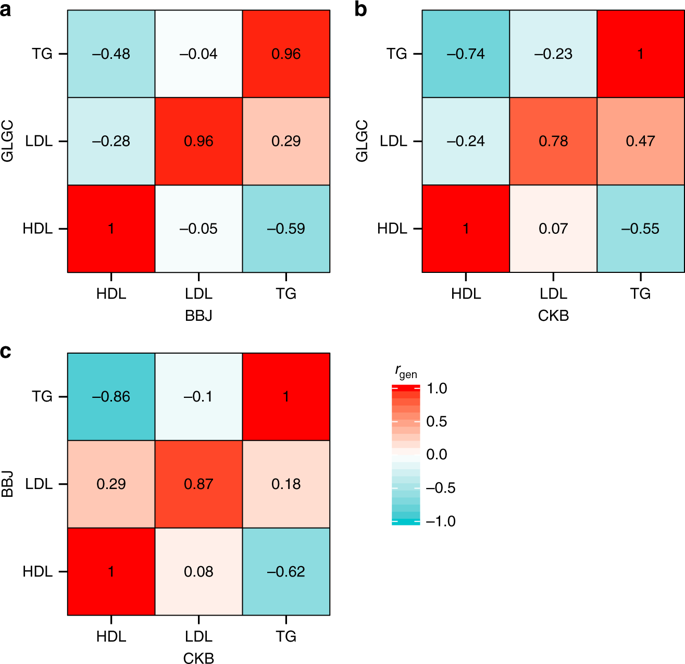当前位置:
X-MOL 学术
›
Nat. Commun.
›
论文详情
Our official English website, www.x-mol.net, welcomes your
feedback! (Note: you will need to create a separate account there.)
The transferability of lipid loci across African, Asian and European cohorts.
Nature Communications ( IF 14.7 ) Pub Date : 2019-09-24 , DOI: 10.1038/s41467-019-12026-7
Karoline Kuchenbaecker 1, 2, 3 , Nikita Telkar 4 , Theresa Reiker 3, 5, 6, 7 , Robin G Walters 8, 9 , Kuang Lin 9 , Anders Eriksson 10 , Deepti Gurdasani 3 , Arthur Gilly 3, 11 , Lorraine Southam 3, 11, 12 , Emmanouil Tsafantakis 13 , Maria Karaleftheri 14 , Janet Seeley 15, 16, 17 , Anatoli Kamali 17 , Gershim Asiki 17, 18, 19 , Iona Y Millwood 8, 9 , Michael Holmes 8, 9 , Huaidong Du 8, 9 , Yu Guo 20 , Meena Kumari 21 , George Dedoussis 22 , Liming Li 23 , Zhengming Chen 9 , Manjinder S Sandhu 24 , Eleftheria Zeggini 3, 11 ,
Nature Communications ( IF 14.7 ) Pub Date : 2019-09-24 , DOI: 10.1038/s41467-019-12026-7
Karoline Kuchenbaecker 1, 2, 3 , Nikita Telkar 4 , Theresa Reiker 3, 5, 6, 7 , Robin G Walters 8, 9 , Kuang Lin 9 , Anders Eriksson 10 , Deepti Gurdasani 3 , Arthur Gilly 3, 11 , Lorraine Southam 3, 11, 12 , Emmanouil Tsafantakis 13 , Maria Karaleftheri 14 , Janet Seeley 15, 16, 17 , Anatoli Kamali 17 , Gershim Asiki 17, 18, 19 , Iona Y Millwood 8, 9 , Michael Holmes 8, 9 , Huaidong Du 8, 9 , Yu Guo 20 , Meena Kumari 21 , George Dedoussis 22 , Liming Li 23 , Zhengming Chen 9 , Manjinder S Sandhu 24 , Eleftheria Zeggini 3, 11 ,
Affiliation

|
Most genome-wide association studies are based on samples of European descent. We assess whether the genetic determinants of blood lipids, a major cardiovascular risk factor, are shared across populations. Genetic correlations for lipids between European-ancestry and Asian cohorts are not significantly different from 1. A genetic risk score based on LDL-cholesterol-associated loci has consistent effects on serum levels in samples from the UK, Uganda and Greece (r = 0.23-0.28, p < 1.9 × 10-14). Overall, there is evidence of reproducibility for ~75% of the major lipid loci from European discovery studies, except triglyceride loci in the Ugandan samples (10% of loci). Individual transferable loci are identified using trans-ethnic colocalization. Ten of fourteen loci not transferable to the Ugandan population have pleiotropic associations with BMI in Europeans; none of the transferable loci do. The non-transferable loci might affect lipids by modifying food intake in environments rich in certain nutrients, which suggests a potential role for gene-environment interactions.
更新日期:2019-09-25































 京公网安备 11010802027423号
京公网安备 11010802027423号